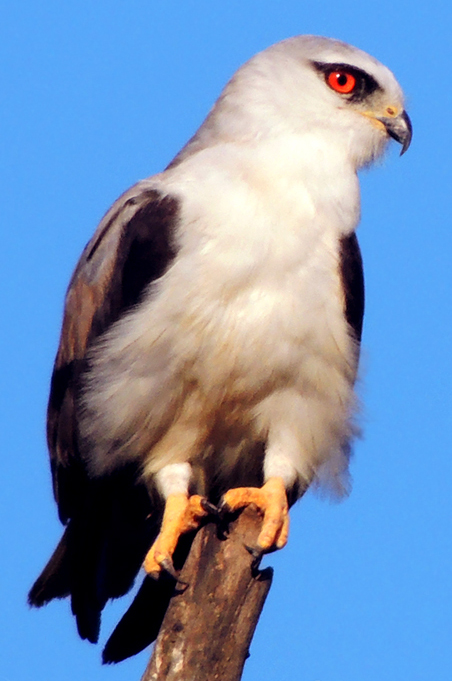Facts About Black-winged kite
The black-winged kite, also known as the black-shouldered kite, is a captivating small bird of prey often seen gracefully hovering over open grasslands, much like kestrels. Belonging to the Accipitridae family, this bird is easily identified by its long wings and striking plumage—a blend of white, grey, and black. Its most mesmerizing feature is its owl-like, forward-facing eyes with red irises.
These birds are highly resourceful when it comes to feeding. They thrive during periodic surges in rodent populations, enabling them to raise multiple broods in a single year. Notably, their numbers in southern Europe have been rising, partly due to human activities such as agriculture and livestock rearing, which create ideal hunting grounds for them.
Classified under the genus Elanus, the black-winged kite has three subspecies dispersed across Europe, Africa, Asia, and the Philippines. Their grey or white feathers adorned with black patches and eye stripes make them easily distinguishable. They predominantly inhabit open landscapes and semi-deserts in Africa and Asia, although their range is expanding into southern Europe.
Breeding season is especially remarkable with these birds. They become territorial and engage in elaborate courtship displays before nest-building. Their diet is diverse, consisting of insects, lizards, rodents, and occasionally birds or frogs. Capable of raising multiple broods in a year, they exhibit nomadic behavior, moving in search of food.
Black-winged kites are social during roosting, often gathering in groups. While generally quiet, they can emit high-pitched squeals or soft whistles, particularly during breeding and roosting periods. They host a variety of parasites, including nematodes and feather lice. Interestingly, their soft feathers can sometimes trap grass seeds, posing a risk of entanglement.

 Mali
Mali